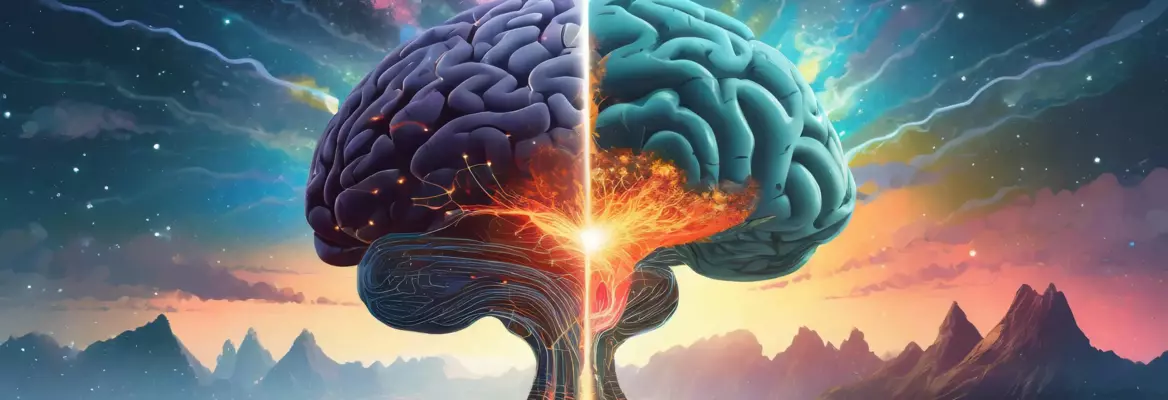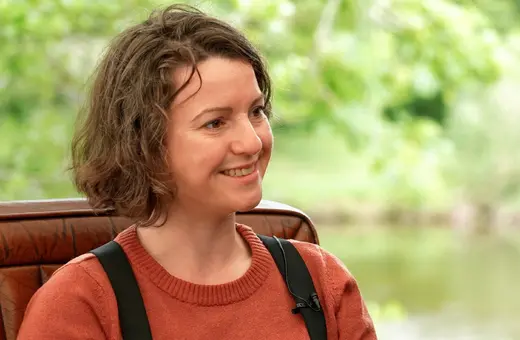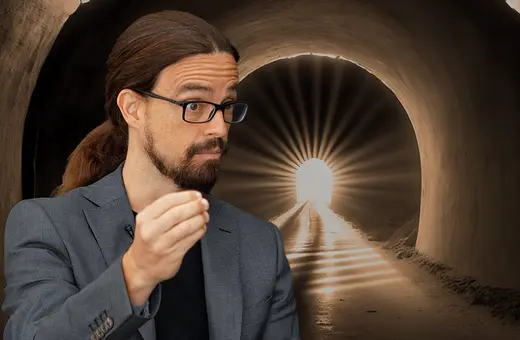The idea of the brain being split into right and left hemispheres that do radically different things has entered the popular imagination. Following an article exchange on the IAI, Scott Barry Kaufman and Iain McGilchrist finally meet to investigate the remaining untouched ground in this mind-melding debate.
Ten years ago I wrote an article for Scientific American called “The Real Neuroscience of Creativity”. In that article, I presented an exciting new approach in neuroscience called the network approach that looks at how large-scale brain networks interact with each other to produce creativity, and I noted that these brain structures recruit areas in both the left and right hemisphere. In other words, creativity is not exclusively a right-brain phenomena.
Fast forward to 2023, the Institute of Art and Ideas asks me if they can re-share the article. Of course I give them permission. They published it, and they titled it “The right-left brain hemisphere split isn’t true”.
Next thing I know, I see a response from Dr. McGilchrist on their website called “The right brain is essential to creativity” where he vociferously replied to my post. Oh man, I unintentionally triggered him! I didn't know the good folks at the Institute of Arts and Ideas were going to ask him to reply to that article, especially considering that post was not originally designed as a criticism of Iain’s work. It was more a response I wrote to the pop psych notion that creativity is only a right-brain phenomena.
Anyway, long story short: I reach out to Iain and explained the situation to him and we had a good laugh about the situation. Our correspondence quickly became friendly, and we started sharing each other’s work with one another. I decided it would make sense to have the conversation in public so invited him on my podcast, and here we are.
I’ve greatly enjoyed going down the rabbit hole of reading Dr. McGilchrist’s work and was pleased to see just how many areas of overlap we have in regards to fascinations, including our attempts to understand the nature of intelligence, creativity and even sacred & transcendent experiences.
This conversation is very rich and I think brings clarity to some important issues in the field of psychology and cognitive neuroscience.
So without further ado, I bring you Dr. McGilchrist.
Scott Barry Kaufman: Iain McGilchrist, it’s an honour to speak with you.
Iain McGilchrist: Well it’s a delight to be here.
S: We have so many areas of mutual interest, as I realised as I went down the rabbit hole that is your large body of work. It’s very rich, and it aligns with many of my own interests in intuition and imagination and intelligence. I can’t help but notice linkages between things you wrote in your 1982 book Against Criticism and things you wrote even in your most recent book, The Matter With Things. You say in Against Criticism, “The understanding of any one thing requires an understanding of the whole of which it is a part.” That seems to capture a lot of your interest in the left and right brain asymmetry, right?





















Join the conversation